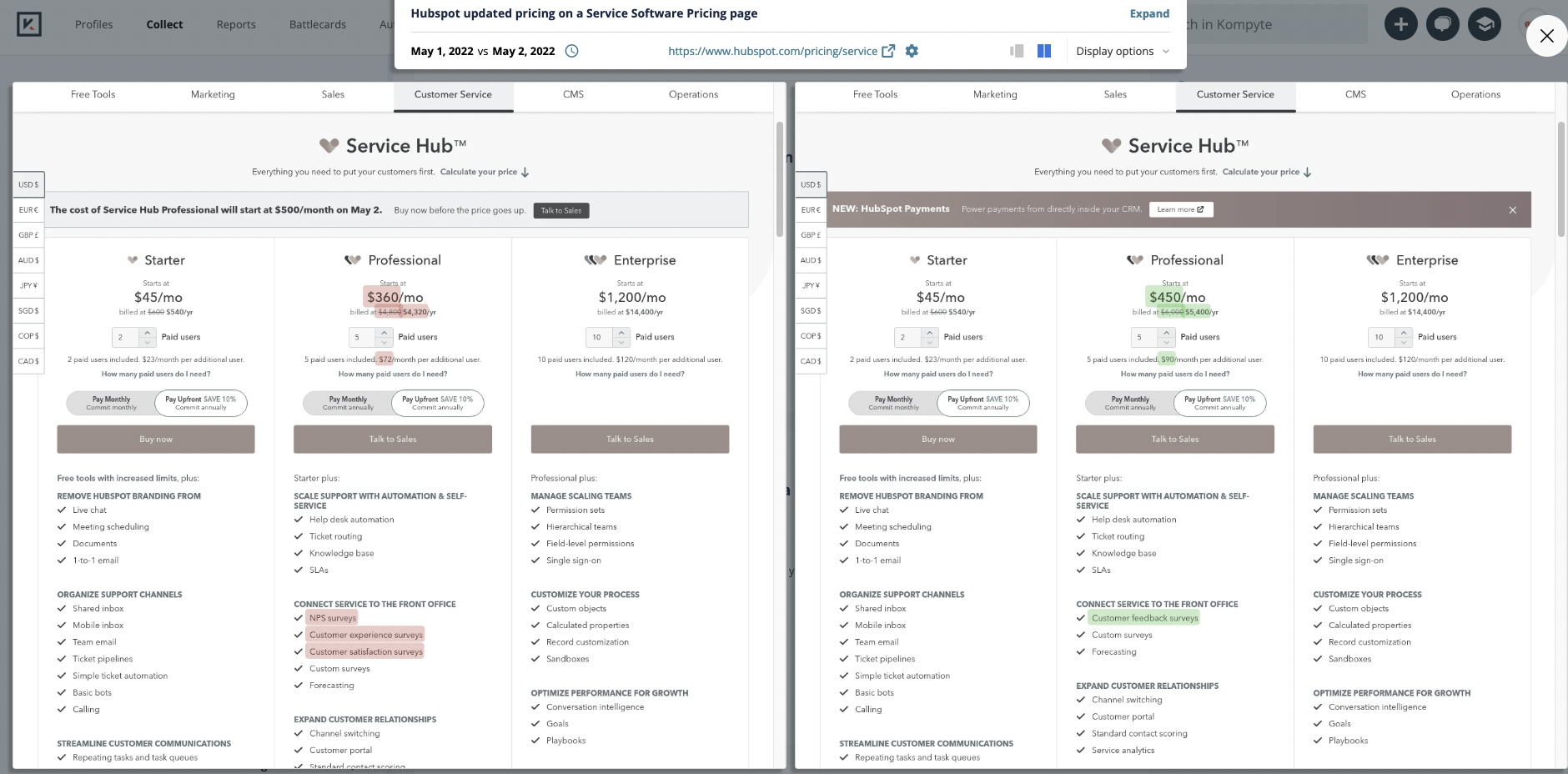Competitive Pricing: What It Is And How to Choose the Right Model
Pricing is always tricky. Finding the right balance and comparing your pricing with your competitors' is even more complicated. Learn how to get it...
Discover how to maximize your profits with shifted market pricing strategies in our comprehensive guide. Learn about different pricing models, their benefits, and how to effectively implement them in your business.

Are you leaving money on the table? In good times and bad, shifted market pricing can be your secret weapon for increasing profits and staying ahead of the competition.
In this article, we'll take an in-depth look at shifted market pricing and the benefits it offers. We'll also provide examples of successful strategies you can adapt for your own use.
We'll also offer a step-by-step guide on how to implement shifted market pricing and discuss the challenges businesses face when incorporating this strategy. So read on to find out all you need to know about shifted market pricing!
The three basic approaches to price setting are:
Cost-plus pricing is the most straightforward and is based on the cost of the product or service with a standard markup. This approach is easy to calculate, but it doesn’t take into account market forces that can influence prices.
Value-based pricing is based on the perceived value of the product or service to the customer. This form of pricing considers the features and benefits of the product as well as the needs and preferences of the customer.
This approach is more complex to calculate and requires more market research and analysis. However, it is also more likely to result in a price that reflects the true value of the product or service and that customers are willing to pay.
Competitor-based pricing can be a successful strategy for businesses that are operating in a competitive market. However, it is important to remember that price is not the only factor that customers consider when making a purchase.
Companies should continue to focus on providing high-quality products or services, excellent customer service, and effective marketing to be successful. Competing solely on price is not a sustainable move long term.
And then there is shifted market pricing, which combines parts of value-based and competitor-based pricing to create a more dynamic system.
Shifted market pricing is a powerful tool to maximize profits while maintaining a competitive edge. It involves strategically adjusting prices based on market changes and competition; offering discounts when demand is low, and charging higher prices when demand is high.
Any change in price brings risks. When you decrease prices, you might improve your bottom line and make customers happy. But, you may also “train” people to wait for price drops and discounts, meaning it will be harder to raise prices (even just to pre-discount levels) when you need to.
The risks of raising prices are obvious. No one likes to pay more for the same product, so you risk falling sales and more churn. However, if your competitors are making the same move or customers see your product as necessary, this may not be a concern.
Businesses should also be conscious to avoid cannibalization of sales from other products or services. If you lower the price of one product or service too much, it could lead to decreased sales of other products as customers opt for the cheaper option.
Optimized Profits. Adjusting prices to match market conditions can enable businesses to maximize their revenue and profit margins. For example, when demand increases and supply remains steady, you might increase prices to capitalize on the higher demand.
Increased Competitiveness. Changing pricing based on changes in competitor pricing can help increase your competitive edge. This can be particularly important in price-sensitive markets or during a time of economic uncertainty, where even small differences in price can significantly impact a customer's decision.
Enhanced Customer Perception. Price can greatly influence how customers perceive a product or service. Premium pricing can create a perception of higher quality, while competitive pricing can attract price-conscious customers. By adjusting prices based on market perceptions and expectations, businesses can better align offerings with their target market.
Flexibility and Responsiveness. Shifted market pricing allows businesses to respond quickly to changes in the market. This can be particularly beneficial in volatile markets subject to supply issues, where prices can fluctuate widely in a short period.
Dynamic Revenue Management: Especially in industries such as airlines or hospitality, shifted market pricing (also known as dynamic pricing) can help to fill capacity during off-peak times and maximize revenue during peak times.
The shifted marketing pricing example most of us are familiar with is what we see in real estate. When homeowners aren’t selling and interest rates are low, prices soar in response. When the market is glutted with homes for sale and interest rates are high, we have the opposite effect.
So, what might shifted market pricing look like for your company?
Dynamic pricing. This strategy, widely used in the travel and hospitality industries, adjusts prices based on fluctuations in demand. For example, airlines and hotels often increase their prices during peak travel times and lower them during off-peak periods to maximize revenue and occupancy.
Surge pricing. Used by ride-sharing companies like Uber, this strategy increases prices during times of high demand to balance supply and demand. This can incentivize more drivers to work during busy times and make sure that riders can always get a ride if they're willing to pay more.
Price skimming. This strategy is often used for new products or services, especially in the tech industry. Companies set a high initial price to maximize profits from early adopters who are willing to pay more. As the market becomes more saturated, they gradually lower the price to attract more price-sensitive customers.
We’ve seen this in the EV (electric vehicle) market. The first EV cost close to 100 thousand dollars, but in 2023, you can score a new EV for around 26 thousand.
Competitor-based pricing. In highly competitive markets, businesses often adjust their prices based on what their competitors are charging. For example, if a competitor lowers their price for a similar product or service, a business might choose to match or beat that price to maintain their market share. You might see this in the grocery store. Rivals Coke and Pepsi work hard to make sure neither has a big competitive advantage with lower pricing.
Penetration pricing. Companies entering a new market or launching a new product might initially set a low price to attract customers and gain market share. Once they've established a customer base, they might gradually increase their prices. You may have observed this when a new business opens up in your town. “Grand opening” prices and “Doorbuster” events are often an attempt to attract customers away from established options.
When it comes to implementing shifted market pricing, there are a few key steps that businesses need to take to maximize their profits. Here is an overview of the process:
1. Conduct thorough market research. Take the time to understand the competitive landscape, identifying key players and determining customer behaviors and their willingness to pay. 
2. Understand Your Customers. Use customer segmentation to understand the price sensitivity of different groups of customers. Try to predict how their buying behaviors may change due to external factors like changes in the economy.
3. Analyze competitor pricing. Constantly track and analyze your competitors' pricing strategies. Try to understand the reasoning behind any pricing changes. Consider a competitive intelligence automation tool like Kompyte, which alerts you to changes in competitor pricing.

4. Set up dynamic pricing rules. Dynamic pricing rules should reflect changes in customer demand. Use machine learning algorithms or hire a data science team to create a model that predicts demand and adjust prices according to your price adjustment strategy.
5. Implement a price adjustment strategy. Prepare a strategy for adjusting prices in response to market changes. You could opt for a gradual price increase as your product gains market share, or a quick response to a sudden surge in demand. Your strategy should take into account how your customers may react to price changes.
6. Consider price discrimination. If your business model allows, consider price discrimination strategies where different prices are set for different customer segments. This can often maximize sales and profits.
7. Test and track the results. Use A/B testing to trial new pricing strategies before fully implementing them. Be sure to track key metrics like sales volume, revenue, and profit margins to see how they're affected by the changes before rolling out changes more broadly.
8. Iterate and improve. Learn from the data you've collected, adjust your strategies, and keep improving. Continue experimenting until you find the strategy that works best for your business.
Remember, not all pricing strategies will work for every business or product. It's crucial to understand your specific market, your customers, and your product's value proposition before deciding on the most effective pricing strategy.
Mastering the art of shifted market pricing is no small feat, but with the right tools, knowledge, and mindset, it can become a powerful lever to increase your profits and competitiveness. The process involves diligent market research, understanding your customers, setting up dynamic pricing rules, and continually testing, tracking, and refining your approach.
We don’t need to tell you that pricing strategy is just one facet of a robust, profit-maximizing operation. For instance, improving sales enablement – equipping your sales team with the right tools, content, and information to sell more effectively – can amplify your profits even further.
A well-trained and equipped sales team can better communicate the value of your offerings, especially when pricing shifts occur.
Yes, shifted market pricing can be a game-changer. It's all about staying responsive, continually learning, and adapting to the market's pulse. So keep exploring, keep innovating, and remember – the power to maximize your profits is in your hands.
Pricing is always tricky. Finding the right balance and comparing your pricing with your competitors' is even more complicated. Learn how to get it...
Your competitors' product offerings and pricing strategies should be as familiar to you as your own. Here's how to make it happen for maximum impact.
Competitor Analysis Report (Part III): Evaluate your competition’s product and pricing strategy to define your future product roadmap.
Be the first to know about new B2B SaaS Marketing insights to build or refine your marketing function with the tools and knowledge of today’s industry.